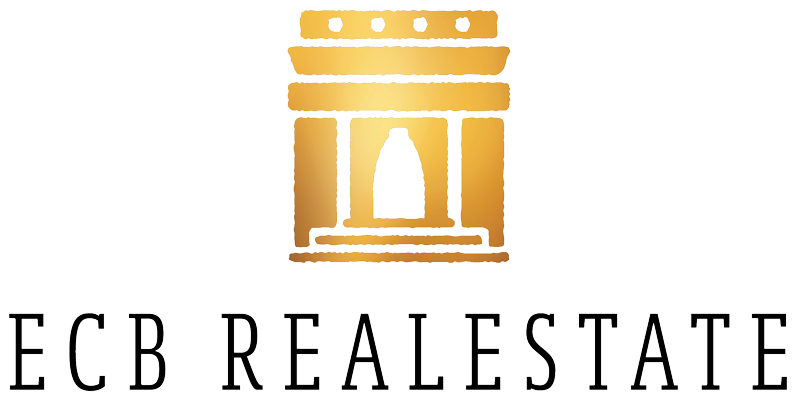Tips from a Millionaire real estate Investor book
The Millionaire Real Estate Investor is a book that provides practical advice and insights on how to become a successful real estate investor. The author, Gary Keller, has thoroughly researched the topic by interviewing more than a hundred millionaire real estate investors. The book is divided into four parts, each focusing on a different aspect of real estate investing.
In the first part, Keller discusses the “Net Worth Model,” which is about prioritizing, tracking, and setting goals to increase your net worth. He explains that net worth is important because it is the foundation of your cash flow. Just like cows produce milk, your net worth produces cash flow. By increasing your net worth, you increase your ability to produce cash flow.
The second part of the book, the “Financial Model,” discusses the two primary ways to build wealth in real estate: equity build-up and cash flow growth. Equity build-up is the difference between what you owe to your lenders and the value of your real estate investments. Cash flow growth is the difference between what comes in and what goes out. Keller suggests building your real estate investing activities to best harness the power of these two engines.
In the third part, the “Network Model,” Keller talks about the importance of networking and building relationships with other people. He divides these relationships into three circles: inner circle (personal relationships like mentors, partners, and consultants), support circle (relationships like property managers, attorneys, lenders, accountants, and real estate agents), and surface circle (functional relationships like title companies, inspectors, electricians, and plumbers). Building a strong network is essential for success in real estate investing.
The final part of the book, the “Lead Generation Model,” is about generating leads to buy good deals. Keller provides tips on how to systematically generate opportunities to buy the right properties at the right prices. He also discusses the importance of being proactive and taking action, as well as being a “shopper” rather than a “buyer.”
Throughout the book, Keller emphasizes the importance of having a clear plan, setting goals, and taking consistent action. He also highlights the power of leverage and the benefits of tax deductions and depreciation.
Overall, The Millionaire Real Estate Investor is a valuable resource for anyone interested in real estate investing. It provides practical tips, insights from successful investors, and a framework for building wealth through real estate.
Here are the main concepts and tips from The Millionaire Real Estate Investor and how you can apply them in your real estate business:
- Think a Million: This means to think and dream big and to get into the investing mindset by growing your net worth, defining your why for investing and becoming financially wealthy, and taking action.
- Buy a Million: To be a successful investor, you need to be smart about your purchases. This means buying at below-market prices and having all your criteria met in order to make money from day 1. Remember, “you make money when you buy, not when you sell”. To do this, consistently understand the values of properties in your target location, understand the cost of any repairs or problems with prospects, and make purchases that will make your renters happy.
- Own a Million: Once you have “bought a million”, it’s time to pay off the debt and build equity in the properties using the cash flow generated. To do this, build a network of contractors, property managers, accountants, lawyers, etc., and ask the two questions with everyone you meet: “Who do you know that I should know?” and “What would you do if you were me?”
- Receive a Million: This means being able to sit back and receive passive income from your properties. To achieve this, focus on building a diverse portfolio of properties and minimizing your management time by using a property management company.
- The Net Worth Model: This model focuses on three main activities: prioritizing, tracking, and setting goals to increase your net worth. Remember, while cash flow is important, the origin of cash flow is capital or your net worth. It’s similar to cows and milk – the milk is the cash flow, but the cows are the equity we own in real estate that produces the cash flow. If you increase your net worth and maintain a safe balance of debt, you increase your ability to produce cash flow.
- The Financial Model: This model is about the two primary ways to build wealth in real estate: equity buildup and cash flow growth. Equity buildup typically results from a down payment or price appreciation, while cash flow growth typically results from higher rent or partially paying off loans.
- The Network Model: This model acknowledges the power of average and other people, and encourages the use of the time, talent, and skills of people around you as there is no such thing as a self-made person. Build three circles in your work network: inner circle (personal relationships like mentors, partners, and consultants), support circle (relationships like property managers, attorneys, lenders, accountants, and real estate agents), and surface circle (functional relationships like title companies, inspectors, electricians, and plumbers).
- The Lead Generation Model: This model is about generating leads to buy good deals, which is one of the most difficult parts of real estate investing. To do this, systematically generate opportunities to buy the right properties by building a list of suspects (potential sellers) and prospects (properties that meet your criteria), and then converting suspects into prospects through marketing and networking.
- The Conversion Model: This model is about converting suspects into prospects through marketing and networking. To do this, use targeted marketing to reach suspects and then use the “five magic questions” to qualify prospects: location, condition, price, terms, and motivation.
- The Transaction Model: This model is about successfully completing the transaction and closing the deal. To do this, have a clear and concise purchase agreement, negotiate effectively, and have all the necessary documents and inspections in order.
- The portfolio model is a concept in the Millionaire Real Estate Investor that refers to the strategy of diversifying one’s real estate investments in order to minimize risk and maximize cash flow. This can be achieved by investing in a variety of different property types, such as single-family homes, multifamily buildings, commercial properties, and more. The goal of the portfolio model is to create a balanced and diverse portfolio that is able to weather changes in the real estate market and generate consistent income. To implement this concept in your real estate business, you can seek out opportunities to invest in a variety of different property types, and focus on building a portfolio that is diverse and balanced. It may also be helpful to consult with a financial advisor or real estate professional to help you create a portfolio that meets your specific investment goals.
Here are some simple tips from The Millionaire Real Estate Investor that you can apply daily as a real estate investor:
- Set clear financial goals for yourself and track your progress towards achieving them.
- Look for real estate investment opportunities that offer good value, such as properties that are priced below market value or have the potential for appreciation.
- Build a strong network of professionals and experts who can help you with your real estate investments, such as property managers, contractors, and lawyers.
- Be proactive in generating leads for potential real estate investments. This can involve networking, advertising, or searching for properties online.
- Learn as much as you can about real estate investing by reading books, attending seminars, and seeking out mentors.
- Be disciplined and consistent in your real estate investing activities, and stick to a set of rules or criteria when evaluating potential investments.
- Manage your properties effectively to maximize cash flow and minimize expenses. This can involve finding good tenants, maintaining the properties, and negotiating favorable lease terms.
- Protect your assets by having adequate insurance coverage and a solid estate plan in place.
- Stay focused on your long-term financial goals and continue to learn and grow as an investor.
As a real estate investor in the USA looking to invest in Mexico, here are the 20% of high-impact activities that you should focus on to get the best results:
- Research the market: It is crucial to have a deep understanding of the real estate market in Mexico, including current trends, demand and supply dynamics, and potential growth areas.
- Identify your target location: Narrow down the location where you want to invest based on factors such as proximity to amenities, infrastructure, and potential for appreciation.
- Build a network: Connect with local real estate agents, investors, and other professionals who can help you navigate the market and identify potential opportunities.
- Understand the local laws and regulations: Make sure you understand the legal requirements for buying and owning property in Mexico, as well as any tax implications.
- Determine your investment strategy: Decide whether you want to focus on short-term rentals, long-term rentals, or flipping properties, and plan your investment accordingly.
- Set clear goals and objectives: Identify the specific outcomes you want to achieve with your investment, and create a plan to achieve them.
- Utilize leverage: Consider using leverage, such as mortgage financing, to maximize your returns on investment.
- Establish a budget and stick to it: Determine how much you are willing to spend on your investment, and be disciplined in sticking to your budget.
- Seek professional advice: Consider consulting with a financial advisor or real estate attorney to ensure you are making informed decisions.
- Stay updated: Stay informed about the latest developments in the market and adjust your strategy accordingly.
The seven key habits that the authors of The Millionaire Real Estate Investor identify as being critical for success in real estate investing:
- Setting clear goals: Successful investors have a clear vision of what they want to accomplish and how they plan to get there. They set specific, measurable, achievable, relevant, and time-bound (SMART) goals for themselves and regularly review their progress.
- Continuously learning and improving: Successful investors are always learning and looking for ways to improve their skills and knowledge. They seek out educational opportunities, read industry-related books and articles, and surround themselves with other successful investors who can share their expertise.
- Networking and building relationships: Successful investors understand the importance of building strong relationships with other industry professionals, such as agents, lenders, and contractors. They attend networking events, join industry organizations, and seek out mentors who can help them grow their business.
- Being disciplined and consistent: Successful investors are disciplined and consistent in their actions, which helps them stay focused and avoid distractions. They follow a set schedule, stick to a budget, and make sure they are organized and prepared for each task they undertake.
- Being persistent and resilient: Successful investors are persistent and resilient, which helps them overcome challenges and setbacks. They don’t give up easily and are always looking for ways to turn a negative situation into a positive one.
- Being flexible and adaptable: Successful investors are flexible and adaptable, which allows them to adjust their strategies and tactics as needed in order to achieve their goals. They are open to new ideas and are willing to try different approaches in order to find what works best for them.
- Being responsible and accountable: Successful investors are responsible and accountable for their actions and decisions. They take ownership of their mistakes and learn from them, and they are always looking for ways to improve and grow their business.
Here is an example of a daily, weekly, and monthly schedule that a real estate investor could follow in order to achieve their goal of becoming a millionaire in one year:
Daily tasks:
- Set specific goals for the day and prioritize them based on importance
- Review daily progress and make any necessary adjustments
- Review and respond to emails and messages
- Follow up with leads and potential clients
- Research new investment opportunities
- Attend any scheduled meetings or appointments
Weekly tasks:
- Review and update long-term goals
- Review and track progress toward financial targets
- Attend industry events and networking functions
- Research new markets and investment opportunities
- Review and analyze financial statements and reports
- Meet with team members or advisors to discuss progress and strategy
Monthly tasks:
- Review and update long-term goals
- Review and track progress toward financial targets
- Attend industry events and networking functions
- Research new markets and investment opportunities
- Review and analyze financial statements and reports
- Meet with team members or advisors to discuss progress and strategy
- Review and update marketing materials and strategies
- Inspect and manage properties
This schedule is meant to be a general guide and can be modified as needed based on the specific needs and goals of the investor. It is important for the investor to be disciplined and consistent in their tasks in order to achieve their goal of becoming a millionaire in one year.
Here are a few examples of goal setting:
Here are some examples of short-term goals that a real estate investor might set:
- Close on one new rental property within the next month
- Increase rental income from existing properties by 10% within the next quarter
- Attend two industry events and make at least three new professional connections within the next month
- Research and evaluate three potential new markets for investment within the next month
- Develop a new marketing campaign and implement it within the next quarter
- Reduce expenses for property management by 15% within the next quarter
- Complete all necessary repairs and updates for one rental property within the next month
Here are some examples of medium-term goals that a real estate investor might set:
- Acquire three new rental properties within the next year
- Increase the value of a portfolio of properties by at least 25% within the next two years
- Build a network of at least 20 industry professionals within the next 18 months
- Expand investment portfolio to a new market within the next two years
- Increase rental income from existing properties by at least 20% within the next two years
- Establish a team of property managers, contractors, and other professionals within the next 18 months
- Increase online presence and visibility through targeted marketing efforts within the next year
Here are some examples of long-term goals that a real estate investor might set:
- Build a portfolio of at least 10 rental properties within the next five years
- Increase the value of a portfolio of properties by at least 50% within the next five years
- Establish a real estate investment company and bring on additional partners within the next five years
- Expand investment portfolio to at least three new markets within the next five years
- Achieve financial independence through real estate investments within the next decade
- Own and manage a portfolio of commercial properties within the next decade
- The transition from active investing to passive income streams within the next decade
It’s important to remember that the specific goals an investor sets will depend on their individual circumstances and objectives. It’s a good idea to set a mix of short-term, medium-term, and long-term goals, and to regularly review and adjust them as needed.
In conclusion, to succeed in real estate investing, it’s crucial to have a clear vision of what you want to accomplish and a plan for how to get there. This means setting specific, measurable goals and regularly reviewing your progress toward them. It’s also important to continuously learn and improve your skills, network and build relationships with other industry professionals, and use a systematic approach to evaluating potential investments. By being disciplined, consistent, and persistent in your efforts, you can increase your chances of success and achieve your financial goals more quickly.





